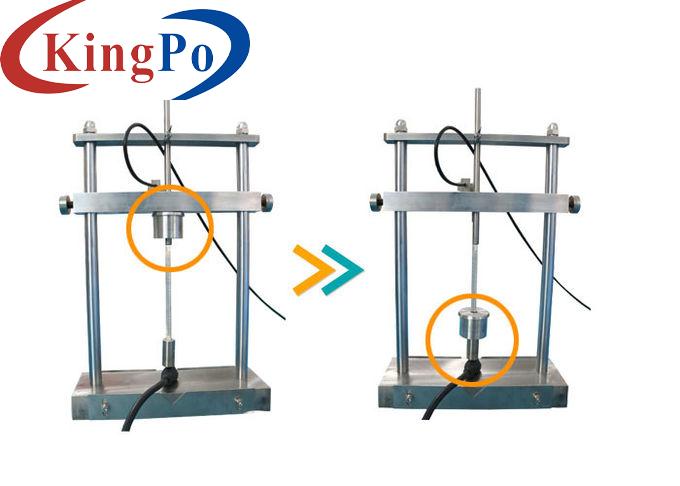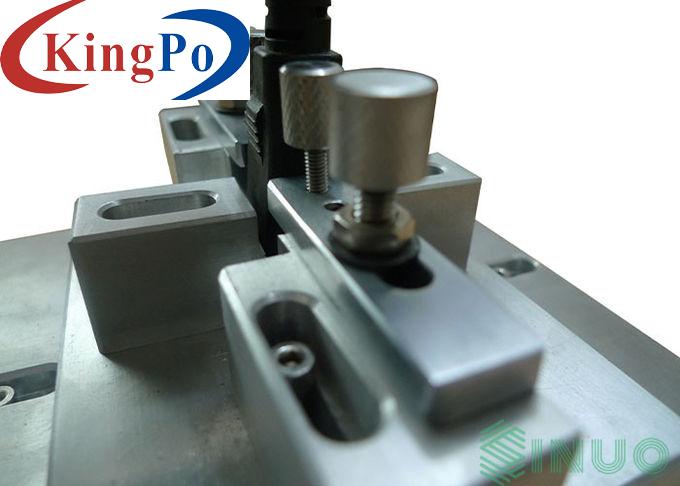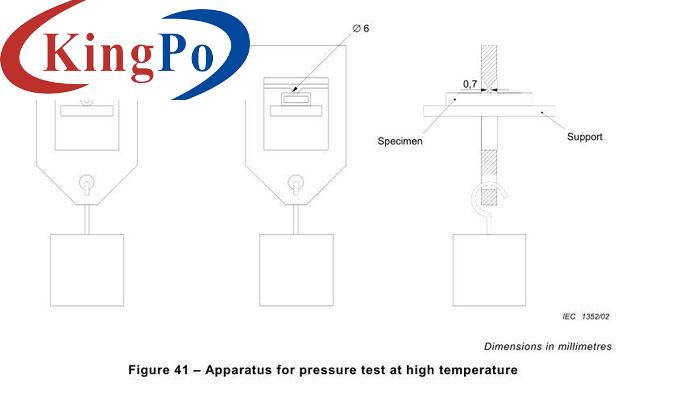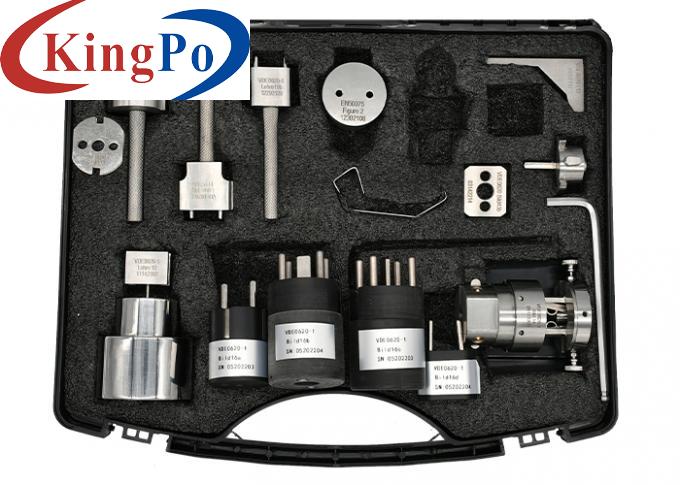Products
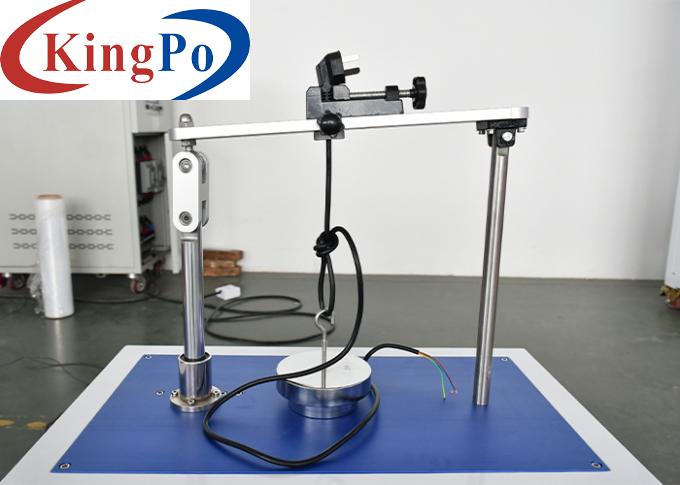
Cord Retention Testing Apparatus For Rewirable Portable Socket Outlets Test IEC 60884-1
Products Description
Cord Retention Testing Apparatus For Rewirable Portable Socket-Outlets Test IEC 60884-1
Product information:
This device conforms to the standard requirement of IEC60884-1 clause 23.2 figure 20. It is for testing rewirable plugs and rewirable portable socket-outlets shall be provided with a cord anchorage such that the conductors are relieved from strain, including twisting, where they are connected to the terminals and that their covering is protected from abrasion. The machine conducts automatically after the test started; it will stop working after reaching the setting number of times.
A cord retention testing apparatus is a specialized device used to evaluate the mechanical strength and integrity of electrical cord connections. It is primarily used in industries such as electronics, appliances, and power tools to ensure that cords remain securely attached to their respective devices during normal use. Here are the key features and components typically found in a cord retention testing apparatus:
Test Fixture: The apparatus includes a test fixture that simulates the device or equipment to which the electrical cord is connected. The fixture is designed to securely hold the cord and provide a means to apply tension or pulling force during the testing process.
Force Application Mechanism: The apparatus incorporates a force application mechanism that enables controlled and adjustable tension to be applied to the cord. This mechanism can be manual, hydraulic, or pneumatic, depending on the specific design of the testing apparatus.
Force Measurement System: To measure the applied tension or pulling force accurately, the testing apparatus is equipped with a force measurement system. This system typically includes load cells or force transducers that convert the applied force into electrical signals for measurement and analysis.
Adjustable Clamps or Grippers: The apparatus features adjustable clamps or grippers that securely hold the cord during the testing process. These clamps or grippers are designed to mimic the typical modes of cord attachment, such as strain relief clamps or cord grips found in electrical devices.
Cord Retention Test Procedure: The testing apparatus may include a standardized cord retention test procedure that outlines the specific steps and parameters for conducting the test. This procedure ensures consistent and repeatable testing across different cord and device configurations.
Force Display and Control: The apparatus is equipped with a force display unit that shows the measured force applied to the cord during testing. It allows operators to monitor the applied force and ensure that it falls within the specified range. Some testing apparatus may also include control features to adjust the applied force or set force limits.
Safety Features: Safety considerations are crucial in the design of the cord retention testing apparatus to protect operators and prevent accidents during testing. This may include safety enclosures, protective shields, and safety protocols to ensure safe handling of the cord and equipment under test.
Data Logging and Analysis: Some cord retention testing apparatus may have data logging capabilities to record and store test data, including applied forces and test results. This data can be analyzed to assess the performance of cord connections, evaluate strain relief mechanisms, and ensure compliance with industry standards and regulations.
The cord retention testing apparatus plays a vital role in ensuring the safety and reliability of electrical devices by assessing the strength and durability of cord connections. By subjecting cords to controlled tension forces, the apparatus helps identify potential weaknesses or failure points in the cord attachment, allowing manufacturers to make necessary improvements and ensure that cords remain securely connected during use.
Technical parameters:
Application:
It is used for testing rewirable plugs and rewirable portable socket-outlets shall be provided with a cord anchorage such that the conductors are relieved from strain, including twisting, where they are connected to the terminals and that their covering is protected from abrasion.
Test sample:
Rewirable plugs and rewirable portable socket-outlets cords.
Feature:
The apparatus conducts automatically after the test started, and it will stop working after reaching the setting number of times.
1. Before install the test sample, can left rotate the speed adjust button to make the speed to be slower, observe when the mechanical arm moves down to the lowest position, press down the STOP button immediately.
Note: the speed adjust button is used to adjust the speed of the motor, thus to adjust the mechanical arm’s action speed. Right rotate this button to speed up, left rotate to slow down. When operator rotates the speed adjust button to make the mechanical arm action speed to match standard requirements, for example, 60 times/min (manually check by a stop watch), operator can mark the position, then next time test, operator just need to rotate the button to the mark position.
2. Loose the up cord clamp, select the appropriate cord bush (refer to the table below) according to the specifications of the sample, insert the cord bush into the entrance hole, then the cord of the specimen are across the cord bush, clamped by the up and lower cord clamps. After that, choose the appropriate weight based on the weight of the test requirements, the weights are hanged on the end of the cord, adjust the weight to the appropriate height, and the test can be started.
3. Access to the power supply, preset the test times on the counter.
Press “RESET” to clear the display value, then press the “RUN” button, the test starts, the test will automatically stop when reach to the setting times, press the “STOP” button when you want to stop during the half-way.
Power supply
AC120V±10%, 60Hz
Number of test
1~9999(it is adjustable.100 is by default
Rate of test
60 times /min
Weight
10N*1, 60N*1, 20N*2
One set of cord bushes
5 pieces (each ofΦ6mm, Φ8mm, Φ10mm, Φ12mm, Φ16mm)
Working stroke
35mm



